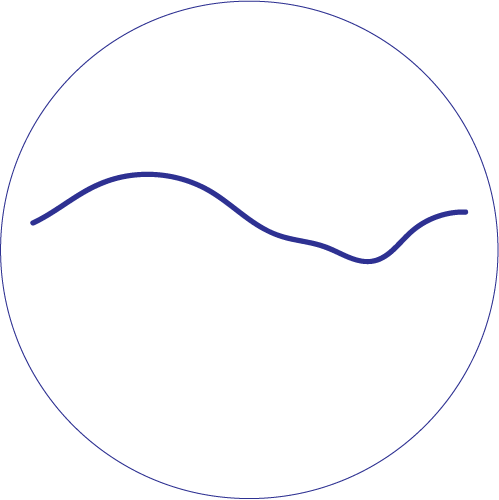Dawn [yoon nam]
While playing the Coming of Existence,
the universe scratched her head and
pondered,
“Is it how colors be or
is it how colors seen?
What’s it gonna be?”
then fell asleep, on the fluid hum of
magical polymorphous substance.*
Like that, she slept in the middle of her
game spread out all around her,
until her mother walked in and woke her
up, “time to get up, rise and shine!”
p o s t s c r i p t
While contemplating the theme of the upcoming issue, “Dawn,” it occurred to me that in my mind the words “dawn” and “drawn” have always been inseparable. I project the image of dawn by first drawing a scene in my head, where the light is drawn and dragged from behind and over the horizon, and then I hear the sonic rings spill—Daaaawn, Draaaawn. And at that moment, I realize dawn is a picture with an indescribable mass of color and sound. I enjoy this unwittingly blissful game of picturing words, linking the two words “dawn” and “drawn” with the idea of infusion, introduction, and interception. Dawn, a period between darkness and sunrise, is the time drawn out and thus intercepted by the introduction and infusion of light and color. Imagine tricking time! But what’s more unbelievable is that this is the movement where light yields to shades, and shape becomes interfused with colors. The first movement resembles that of drawing, how the world takes its shape by being drawn, by animating or masking the light against the space, but the second reveals that of coloring (painting), how color breathes life into the shape. Dawn creeps behind the stillness of the night; it draws in the calm of the night and gives to the world fluidity and transformation. Dawn is an opening to the polymorphic chaos that is our day; it is shapeless but full of movement and chance like the colors it spills onto the world. Dawn is a blazing mess, a joyful bewilderment, a “delight in disorder.”**
With this particular rumination on the word “dawn,” I wanted us to remember again (I only say “again” because I do believe in the readers’ awareness of this hardened tradition) how the great big books of Western metaphysics and European history mainstream the story of a civilized man braving the unknown world, the Orient, the Africa, the Amazons, reaching the outer edges of the world, meeting the colorful and unknown Others. To calcify the idea that some nations and cultures are subject to be colonized and commodified by the civilized because they are color(ful), strange, and primitive, the world of the chromophobes frames and devalues the unequivocal, fluid, and adazzle display of color as loud, immoral, and childish.*** Those who fear the fluid energy of color have joined the language of color and sound to paint color as discomforting and diabolical. The brighter the color is, the louder and more jangling (less polite, less pleasant) the sound will be. Loud, colorful lies. Exotic, luring shades. Note how the language of senses comes to signify the lack of moral refinement.
Yet dawn is a riot of senses; dawn is a riot of the unintelligible, an unimaginable sea of emotions against the logocentric army of the civilized, established, historicized, and erected empires. If we love color, if we could truly see the fluid state of color before its colonial and synthetic mutations, how might we express the magnitude of our love? Through the eyes of a child, who loves to color every corner of the world with blazingly loud and bright color crayons, any moment they wake up, any chance they are given.****
*In his visionary work What Color is Sacred? (U of Chicago P, 2009), Michael Taussig examines how color gives substance to the world and reflects on what he calls “polymorphous magical substance,” a kind of uncanny otherness, the sibylline state of color that he believes is beyond substance or spirit: “this curious light lightness that floats, that passes, that radiates across the valley like the breath of dying sun? What could it be? Is it a substance or is it an action? Is it something out there in the extra-personal world, or is it ‘merely’ part of the human imagination? Or could it be all these things, and such questions are irrelevant, as color mocks our usual categories of understanding? I choose to call it polymorphous magical substance, this quite other medium that floats like the breath of dying sun, a polymorphous substance that is the act and art of seeing” (47). According to Taussig, the idea behind this term was derived from a story told by Father Martin Gusinde, sent to Tierra del Fuego in 1919 as a German missionary, about the feathers of new born birds believed to fill the bodies of Selk’nam shamans.
**The title of a Robert Herrick (1591-1674) poem. As an English Cavalier poet, Herrick celebrated such effervescent and corporeal values as pleasure, leisure, and even disorderliness, all eschewed by the Puritans.
***Taussig illuminates that the history of color is also that of colonialism, which further reveals the West’s discomfort with color and the world’s division between chromophobes and chromophiliacs.
****To show the usefulness of tying color to water, Taussig refers to Walter Benjamin, who argued, “for [children] color is fluid, the medium of all changes,” and the mural work of John Pugh, who painted a mural titled “Drain,” which depicts the LADWP (Los Angeles Department of Water and Power) drainpipe sucking up color, literally draining the life out of western rivers. For further reading, check out: Randall C. Archibold, “Mural Comments about Water, and a City Doesn’t Like It,” New York Times, 3 Nov. 2005, p. A21; and Walter Benjamin, “A Child’s View of Color,” trans. Rodney Livingstone, Selected Writings, ed. Marcus Bullock et al., 4 vols.

